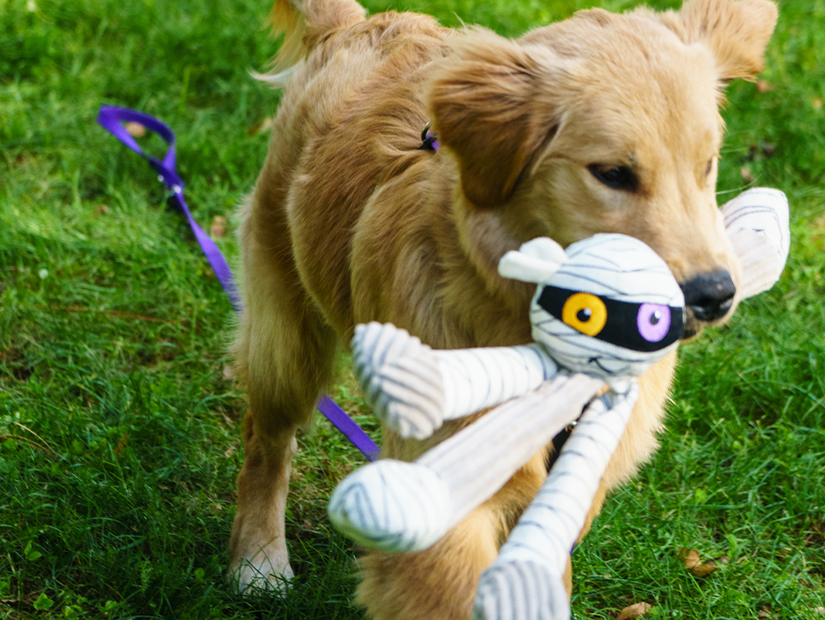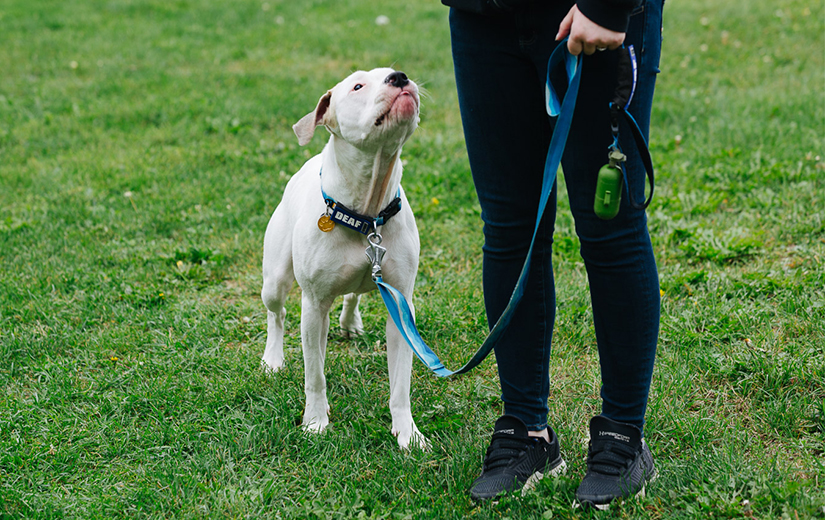Kind Corner: Effective Redirection – It’s all about timing


Today’s Kind Corner is written by Sarah Shapiro-Ward, trainer at When Hounds Fly Dog Training. Sarah talks about the importance of timing when using redirection and explains how to do it effectively.
Let’s get reading!
What is redirection?
Redirection is all about teaching your dog to “do this, not that.” It’s a broad training term for a goal that almost all dog guardians can relate to!
Typically, redirections are applied when a dog is about to do something naughty. Just before the unwanted behaviour occurs, the handler intervenes with an appropriate alternative. For example, if Bill the Shih-Tzu puppy is waddling towards the laundry basket looking for stray socks, Sophie, the human guardian, may step in with a tug toy before he gets there. Bill finds a healthy outlet for his exploration, and Sophie’s socks stay in the basket.
When to use redirection?
Redirecting your dog from a “bad” activity to a “good” one is a popular strategy, especially among new puppy parents. However, redirection should be one of the last arrows in your quiver. When you need to redirect your dog, it means that proactive environmental management and training strategies are still a work in progress.
Ideally, the environment should be set up such that your dog is unlikely to make poor choices in the first place. Your dog can’t chew up shoes if the shoes have been put away. Proactive training strategies can teach your dog what they should be doing in a given scenario. For example, teaching your dog to bring you a toy is a proactive training strategy which can reduce unwanted behaviour that would otherwise occur when your dog feels bored.
However, life is unpredictable, and there will be times when an intervention is required. In these situations, redirection can be an effective tool to prevent the rehearsal of unwanted behaviours.

When redirection goes wrong
Ineffective redirection is one of the biggest training mistakes I see when working with novice guardians.
Learning occurs all the time, whether we want it to or not. Desirable consequences will reinforce our dog’s behaviours, making them more likely to reoccur. A simple example: Lucy the Basset Hound paws Jo the human on the leg (the behaviour), and Jo responds by putting away her phone and asking Lucy what she wants (the desirable consequence). The action of pawing is reinforced by the consequence of attention – and we weren’t even training!
This mechanism for learning is where redirection becomes tricky. Our short-term goal of “do this, not that” leads to a long-term problem where we encourage unwanted behaviour with a desirable redirection. This is easier to understand with a specific example:
When out for a walk, Cooper the Labrador Retriever pulls on leash. Cooper’s dad calls him back to his side and gives Cooper a treat while in heel position.
In this example, Cooper has learned that a sequence of behaviours has led to a desirable consequence. Unfortunately, the sequence learned includes his initial “naughty” behaviour (pulling), followed by redirection to the alternative behaviour (heel) and then the reward (treat). Cooper just learned that pulling will result in a treat – Oops!
Another example involves Mira, the Mexican rescue dog.
Mira loves to chew on the wooden table leg. When Mira’s mom catches her doing this, she gets Mira’s attention by making a loud kissy sound and then gives her a special stuffed Kong to chew on instead.
Mira’s mum is using a redirection technique which is sometimes called a “positive interrupter.” Unfortunately, the kissy sound serves to mark the unwanted behaviour in much the same way as we use clickers in training to mark target behaviours. As with the other example, Mira is learning a sequence of behaviours where the initial behaviour (chewing the furniture) is directly reinforced by a delicious stuffed Kong.

Effective redirection – It’s all about timing!
For redirection to be effective, timing is crucial: any redirection must occur before the unwanted behaviour is initiated. This way, the unwanted behaviour is never reinforced because it never actually occurs.
Let’s revisit the examples in the previous paragraphs and look at what could be changed for a better training outcome.
When out for a walk, Cooper should earn a treat any time he makes eye contact with his dad. If Cooper pulls on his leash, his dad stops walking and waits for the pulling to stop before moving forward again. When Cooper sees something he would usually pull towards, such as a bird or friendly dog, his dad immediately cues eye contact and reinforces this behaviour with a treat.
This scenario has three training strategies in place:
- A proactive approach to reinforce an appropriate alternative behaviour (eye contact) which is incompatible with the unwanted behaviour (pulling).
- A different consequence which is not reinforcing (stopping) for pulling instead of a redirection. Cooper will learn that nothing fun happens when he pulls, but lots of fun things happen (forward movement and treats) when he’s paying attention to dad!
- A well-timed redirection (cue to eye contact) before Cooper starts to pull. With the redirection timed in this way, Cooper will eventually learn to look up at his dad the moment he sees something distracting instead of pulling towards it.
Mira loves to chew on her toys. When her mom finds her chewing on her dog toys, she praises her and gives her a treat. The dining area is blocked off with a baby gate, so Mira cannot access the area unless supervised (this is environmental modification). If Mira ever approaches the table leg, her mum is supervising and redirects her attention to a stuffed Kong instead.
This scenario,
- reinforces an appropriate alternative behaviour (chewing on dog toys), teaching Mira that her toys are fun to chew on.
- Uses environmental management to ensure that Mira cannot access the table to chew on it.
- Uses a well-timed redirection when Mira does have access to the table leg so that table chewing is never actually reinforced because it never occurs.
Redirection can be a useful training tool when used mindfully and correctly. If you find yourself relying heavily on redirection to prevent unwanted behaviour, you may need to go back to basic training to help your dog learn what they should be doing. Consider talking to an AnimalKind trainer to help you develop a robust, proactive training plan.
Happy training!